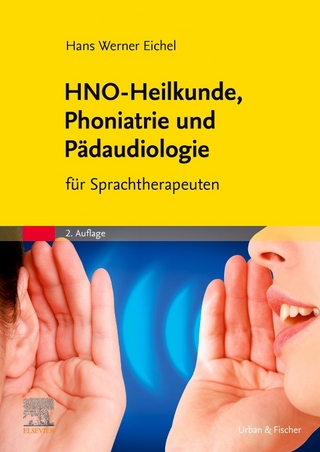
Clinical Voice Pathology
Plural Publishing Inc (Verlag)
978-1-59756-556-1 (ISBN)
- Titel ist leider vergriffen;
keine Neuauflage - Artikel merken
A classic work, now in its fifth edition, Clinical Voice Pathology: Theory and Management, is a compilation of the authors' many years of experience in a multitude of settings and addresses a considerable range of voice disorders in various populations and from various etiologies--including medical, environmental, social, psychological, occupational, and even idiopathic threats to vocal health. The addition of world-renowned coauthor, Nelson Roy, brings this fifth edition even more valuable experience in clinical voice disorders research. Whether a typical voice user, occupational voice user, elite vocal performer, head and neck cancer client, or an individual who has lost the ability to communicate competently and confidently due to a detrimental voice change, each patient presents a unique diagnostic dilemma: how best to return the voice to its optimal condition? This text thoroughly answers this question through explaining and illustrating the knowledge necessary to treat and manage voice disorders.Key features to the fifth edition: Provides the history and common causes of voice disorders, introducing the interdisciplinary background essential to successful voice therapy and treatment planning : Details the anatomy and physiology of voice production to aid in identification and evaluation measures: Reviews criteria for a comprehensive voice assessment, such as high speed digital imaging and videokymography tools, as well as several voice therapy approaches, including hygienic, symptomatic, psychogenic, physiologic, and eclectic treatments: Highlights current clinical evidence that either supports or refutes popular voice therapy treatments for conditions such as papilloma, mutational falsetto, and transgendered voice: Presents the pathologies of the laryngeal mechanism, organized according to ASHA's Classification Manual for Voice Disorders: Provides guidance for management and rehabilitation of the laryngectomized patient, outlining the complementary roles of the interdisciplinary treatment team to manage multiple treatment goals.
With entirely new artwork, full color inserts, case examples, and multimedia images of pathologies, Clinical Voice Pathology, Fifth Edition, not only maintains but also significantly improves on the standards set by its previous editions.
Dr. Stemple is a Professor of Communication Sciences and Disorders in the College of Health Sciences at the University of Kentucky. Nelson Roy, PhD, CCC-SLP Dr. Klaben is an Associate Professor in the Department of Otolaryngology - Head and Neck Surgery at the University of Cincinnati Medical Center.
Preface 1. Voice: A Historical Perspective Ancient History The Renaissance The 17th to 19th Centuries The Laryngeal Mirror Further Advancements Voice Therapy Clinical Voice Pathology References 2. Anatomy and Physiology Anatomy The Laryngeal Valve Respiration for Phonation Vocal Tract Resonance Structural Support for the Larynx Hyoid Bone Laryngeal Cartilages Muscles Muscles for Respiration: Inspiration and Exhalation Laryngeal Muscles True Folds, Ventricular (False) Folds, and Ventricle Vocal Fold Microstructure Epithelium Basement Membrane Zone Lamina Propria Vocal Muscle Blood Supply and Secretions Neurologicl Supply Central Nervous System Control Peripheral Innervation Laryngeal Reflexes Developmental Changes Geriatric Vocal Folds DNA Mircoarray Gene Expression Analysis Physiology of Phonation Theories of Vibration Fundamental Frequency Control Intensity Control Phonation Modes and Voice Quality Control Summary References 3. Some Etiologic Correlates Etiologies of Vocal Misuse Phonotrauma Inappropriate Vocal Components Medically Related Etiologies Direct Surgery Indirect Surgery Chronic Illnesses and Disorders Primary Disorder Etiologies Personality-Related Etiologies Environmental Stress Identify Conflict Summary References 4. Pathologies of the Laryngeal Mechanism Prevalence of Voice Disorders Pathology Classifications Structural Pathologies of the Vocal Fold Congenital and Maturational Changes Affecting Voice Inflammatory Conditions of the Larynx Trauma or Injury of the Larynx Systematic Condition Affecting Voice Allergies Nonlaryngeal Aerodigestive Disorders Affecting Voice Psychiatric and Psychological Disorders Affecting Voice Neurological Disorders Affecting Voice Movement Disorders Affecting the Larynx Central Neurological Disorders Affecting the Voice Other Disorders of Voice Use Summary References 5. The Diagnostic Voice Evaluation The Management Team Patient Profile Referral Sources Medical Evaluation Voice Pathology Evaluation Diagnostic Voice Evaluation Referral Reason for the Referral History of the Problem Oral-Peripheral Examination Auditory-Perceptual Voice Assessment Patient Self-Analysis of the Voice Disorder Impressions Prognosis Recommendations Additional Considerations Summary References Appendix 5-A. Sample Report Appendix 5-B. Consensus Auditory-Perceptual Evaluation of Voice (CAPE-V) Appendix 5-C. The Rainbow Passage Appendix 5-D. Vocal Component Checklist Appendix 5-E. Voice Handicap Index (VHI) 6. Instrumental Measurement of Voice Introduction to Instrumentation in Voice Assessment Clinical Utility Basics of Technical Instruments Microphones and Recording Environment Digital Signal Processing Acoustic Measurements Pitch Detection Algorithm Fundamental Frequency Intensity Voice Range Profile, Phonetogram, and Physiologic Frequency Range of Phonation Perturbation Measures Signal (or Harmonic)-to-Noise Ratios Spectral Analysis Cepstral Spectral Index of Dysphonia (CSID) Aerodynamic Measures Calibration Pressure, Flow, Resistance, and Ohm's Law Airflow Equipment Flow Measurement Subglottal Air Pressure Measurement Phonation Threshold Pressure Laryngeal Resistance Inverse Filter Laryngeal Imaging Endoscopy Stroboscopy High-Speed Digital Imaging Kymography Criteria for Laryngeal Imaging Recording Protocol Visual Perceptual Judgements Electroglottography (EGG) Laryngeal Electromyography (LEMG) Normative Information Electrical Safety Hygienic Safety The Clinical Voice Laboratory Glossary Acoustics Aerodynamics References Appendix 6-A. Joint Statement: ASHA and AAO-HNS Appendix 6-B. Vocal Tract Visualization and Imaging: Position Statement 7. Survey of Voice Management Voice Therapy Orientations Hygienic Voice Therapy Symptomatic Voice Therapy Psychogenic Voice Therapy Physiologic Voice Therapy Eclectic Voice Therapy Case Study 1 Hygienic Voice Therapy Treatment Strategies for Vocally Traumatic Behavior Vocal Hygiene Therapy Approaches Case Study 2: The Homemaker Case Study 3: The Noisy Job Environment Case Study 4: The Public Speaker Case Study 5: Phonotrauma in Children Case Study 6: Can We Always Expect Success? Hydration Confidential Voice Symptomatic Voice Therapy Therapy Approaches for Respiration Therapy Approaches for Phonation Therapy Approaches for Resonance Therapy Approaches for Pitch Therapy Approaches for Gender Reassignment Voice Change Therapy Approaches for Loudness Modification Therapy Approaches for Rate Modification Therapy Approaches for Laryngeal Area Muscle Tension Psychogenic Voice Therapy Functional Aphonia/Dysphonia Functional Falsetto Vocal Chord Dysfunction (VCD) Physiologic Voice Therapy Case Study 11: Laryngeal Muscle Imbalance Case Study 12: The Postsurgical Patient Case Study 13: Presbyphonia Vocal Function Exercises Resonant Voice Therapy Accent Method of Voice Therapy Lee Silverman Voice Treatment Team Management of Specific Laryngeal Pathologies Vocal Fold Cover Lesions Laryngopharyngeal Reflux and Gastroesophageal Reflux Disease Unilateral Vocal Fold Paralysis Case Study 14: Unilateral Vocal Fold Paralysis Spasmodic Dysphonia Successful Voice Therapy Refernces Appendix 7-A. Phrases and Sentences Graduated in Length Paragraph Readings Poetry Readings 8. The Professional Voice Overview The Professional Voice User History The "At-Risk" Status Professional Roles The Otolaryngoloist The Voice Pathologist The Produces The Agent or Manager Clinical Pathways Otolaryngology-Voice Pathology-Voice Pedagogy Voice Pedagogy-Otolaryngoloist-Voice Pathology Voice Pedagogy-Voice Pathology-Otolaryngology Otolaryngology-Voice Pedagogy Voice Pathologist-Voice Pedagogy Vocal Types and Vocal Range Categories of Singers Vocal Registers Common Etiologic Factors Personality Factors Phonotrauma Drugs Hydration Common Pathologies Acute and Chronic Noninfectious Laryngitis Vocal Nodules Contact Ulcers and Granulomas Gastroesophageal Reflux Disease/Laryngopharyngeal Reflux Voice Fatigue Vocal Fold Hemorrhage and Vascular Pathologies Clinical Assessment of the Vocal Performer Supportive Training and Techniques Alexander Technique The Linklater Method The Feldenkrais Method The Lessac System Estill Voice Training Summary Glossary of Terms Used in Singing References 9. Rehabilitation of the Laryngectomized Patient Overview Incidence of Laryngeal Cancer Etiology Symptoms of Laryngeal Cancer Medical Evaluation Staging and Tumor-Node-Metastasis Classification Lymph Node Distribution Treatment Options Conservation Combined Treatments Radiation Therapy Surgery Concurrent Chemoradiotherapy Methods of Reconstruction Needs for Follow-Up Treatment Multidisciplinary Rehabilitation Team Special Concerns of the Laryngectomized Patient Communication Physical Concerns Psychosocial Concerns Speech Rehabilitation Artificial Larynges Esophageal Speech Surgical Prothetics Role of the Speech-Language Pathologist and Surgical Prothetics Patient Evaluation Patient Fitting Independent Care Maximizing Communication Hands-Free Speaking Valve Summary Helpful Websites on Head and Neck Cancers Refernces Index
| Zusatzinfo | B/W with color inserts |
|---|---|
| Verlagsort | San Diego |
| Sprache | englisch |
| Maße | 178 x 254 mm |
| Gewicht | 816 g |
| Themenwelt | Medizin / Pharmazie ► Gesundheitsfachberufe ► Logopädie |
| Medizin / Pharmazie ► Medizinische Fachgebiete ► HNO-Heilkunde | |
| ISBN-10 | 1-59756-556-3 / 1597565563 |
| ISBN-13 | 978-1-59756-556-1 / 9781597565561 |
| Zustand | Neuware |
| Haben Sie eine Frage zum Produkt? |
aus dem Bereich


